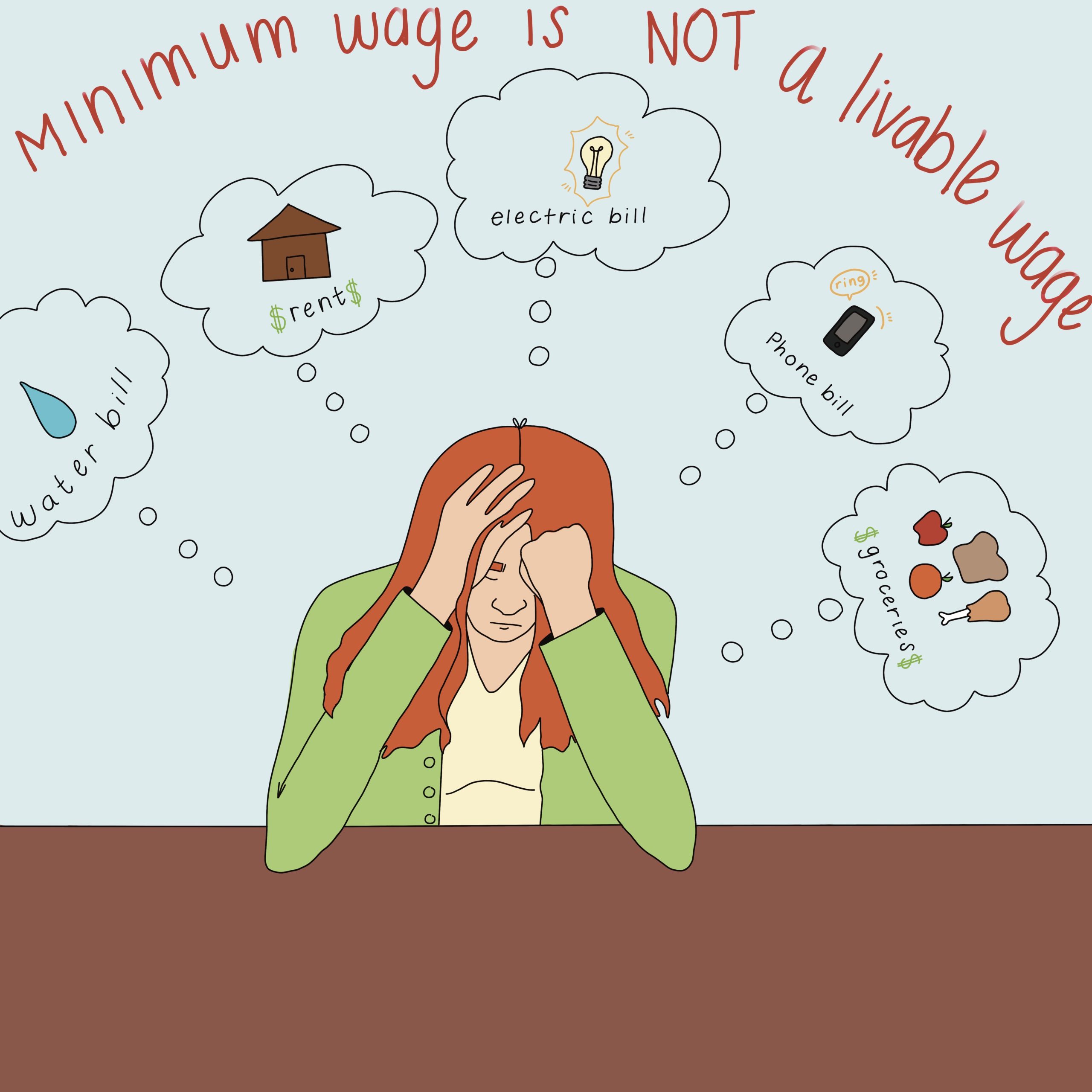
The federal minimum wage was first introduced by Congress under the Fair Labor Standards Act of 1938 starting at just 25 cents per hour. Over the years, the minimum wage has increased periodically, although almost 85 years later, it remains inadequate.
Currently in California, the minimum wage is set at $14 an hour for employers with 25 or less employees and $15 an hour for employers with 26 or more employees. Despite the dramatic difference between the 1938 and 2022 wage, people continue to endure the effects of an insufficient wage as they try to make ends meet.
The minimum wage should go hand-in-hand with the living wage and balance one another in a plausible manner. The living wage measures the minimum amount of income an individual or family can produce in order to meet their basic needs. The costs under the umbrella of a living wage include food, housing, healthcare, childcare, transportation, and personal and household necessities.
Although the minimum wage has increased throughout the years, inflation, along with the increased cost of living, do not average in the slightest in order to accommodate. By definition, inflation is “the rate at which the value of a currency is falling and, consequently, the general level of prices for goods and services is rising.”
On the surface, an individual and/or family may be given the impression that their labor is being valued as the minimum wage is increased but instead, it is actually decreasing. As the minimum wage increases, inflation and cost of living also increases which would mean that the monetary income is holding less and less value. Currently in the United States, the inflation rate is 8.54% which is significantly higher compared to the 1980 inflation at 3.5%.
Let’s focus on California specifically. An individual working full-time (40 hours a week) within the service industry would likely be on a $15 per hour salary. This would amount to $600 weekly, $2,400 monthly, and $28,800 yearly with the exception that unpaid sick leave and family leave are not being taken into consideration.
According to World Population Review, the average cost of rent in California is about $1,500, although in many cities such as Los Angeles and San Diego, the cost of rent can be upwards of $2,000. Fresno is also amongst the nation’s highest when it comes to rent prices as they surged throughout the years according to The Fresno Bee.
For the first time in recent moments, someone working a full time job on a minimum wage is unable to afford rent anywhere in the country, especially if we consider other monthly expenses.
An electricity bill would average to about $100 to $200 a month, while in many cases, the numbers are significantly higher.
As far as transportation, an average car payment would be about $575 for new vehicles and $430 for used vehicles with car insurance averaging to about $180 a month while gas prices average to about $5.68 per gallon, not considering the recent surge in gas prices.
The average cost of food per person would amount to just a little over $300, and health insurance would average to over $400 a month, not including the cost of insurance if you have a child.
With just a few calculations, you would realize that it would be impossible to survive within the state of California without some form of assistance whether it be from the government or from your own parents.
The calculations do not take into consideration the cost of plenty of other everyday expenses for many such as the cost of having a child, personal and household necessities, college tuition, savings for an emergency fund, as well as the financial freedom to travel or take time off from work. Now more than ever, individuals are unable to enjoy the fruits of their labor.
The idea of the American Dream is based on home ownership which is the way that Americans measure success, but that dream has slowly been destroyed due to the consistent rise in the costs of living and stagnant wages. We have relied heavily on the notion that one can make it if they try hard enough but that is proving to no longer be a realistic approach especially for the younger generations.
Purchasing power has significantly decreased, which is “the value of a currency expressed in terms of the numbers of goods or services that one unit of money can buy.” In comparison to today, the cost of goods and services for generations before us were much cheaper and one could essentially buy more with less money. Purchasing power between the generations has shifted greatly. According to Business Insider, boomers once owned about 21% of America’s wealth. Now, millennials hold only 5% while also dealing with the impact of extreme inflation and decrease in purchasing power.
Well, what can be done about this ongoing issue?
Raising minimum wages is not enough. Although it may be a part of the solution, it should not be the focus point. It is a systemic problem, something that needs to be challenged from within – a new approach. What we need is a more sustainable and radical approach to policy making that combats the last few decades of the status quo.
Apart from meaningless policies, we do not have leaders with a strong vision forward. Unfortunately, we have leaders who no longer propose strategies and solutions to our perennial problems but instead focus on highlighting the fact that it could be worse or the other side is worse.
Leaders who have been the driving force of economic policies are essentially all older, predominantly white men. It’s time to introduce new, younger people into politics who have the foresight to implement real change.


